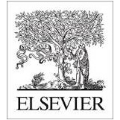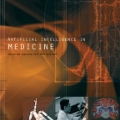Convolutional Neural Networks (CNNs) can play a key role in Medical Image Analysis under large-scale annotated datasets. However, preparing such massive dataset is demanding. In this context, Generative Adversarial Networks (GANs) can generate realistic but novel samples, and thus effectively cover the real image distribution. In terms of interpolation, the GAN-based medical image augmentation is reliable because medical modalities can display the human body's strong anatomical consistency at fixed position while clearly reflecting inter-subject variability; thus, we propose to use noise-to-image GANs (e.g., random noise samples to diverse pathological images) for (i) medical Data Augmentation (DA) and (ii) physician training. Regarding the DA, the GAN-generated images can improve Computer-Aided Diagnosis based on supervised learning. For the physician training, the GANs can display novel desired pathological images and help train medical trainees despite infrastructural/legal constraints. This thesis contains four GAN projects aiming to present such novel applications' clinical relevance in collaboration with physicians. Whereas the methods are more generally applicable, this thesis only explores a few oncological applications.
翻译:在大规模附加说明的数据集下,以GAN为基础的医学神经网络(CNNs)可以在医学图像分析中发挥关键作用,但是,编制如此庞大的数据集要求很高。在这方面,General Aversarial网络(GANs)可以产生现实的、但新的样本,从而有效地覆盖真实的图像分布。在内推学方面,基于GAN的医学图像增强是可靠的,因为医学模式可以显示人体在固定位置上的强力解剖一致性,同时明确反映不同对象之间的变异性;因此,我们提议使用噪音到模拟GANs(例如,对不同病理图象的随机噪声样本)来(i)医学数据增强(DA)和(ii)医生培训。关于DA,GAN产生的图像可以改善基于监督下的学习的计算机辅助诊断。关于医生培训,GANs可以展示新颖的病理图象,并帮助培训医疗学员,尽管存在基础设施/法律上的制约。本论文包含四个GAN项目,目的是在与医生的合作中展示这种小的临床应用关系。而这种方法则更普遍适用。




